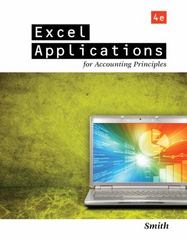Question
to be clear, this question was from practice that was provided that are worth no points at all. i just need to understand how it
to be clear, this question was from practice that was provided that are worth no points at all. i just need to understand how it lead from start to end because I been getting lot of errors in this chapter in this class and couldn't figure out why. i have an exam that are due coming up later this weekend so i would like a guideline how these few questions related to the other and how we could ensure it would be correct (like a check). so i could use the guideline as an example to do other practice questions to ensure i understand how to solve them before the exam. I attached few pictures of graphs of what i was seeing so you could see what i am dealing with as well. thank you so much.
Hillyard Company, an office supplies specialty store, prepares its master budget on a quarterly basis. The following data have been assembled to assist in preparing the master budget for the first quarter:
- As of December 31 (the end of the prior quarter), the company's general ledger showed the following account balances:
Cash $56,000
Accounts receivable 212,800
Inventory 60,150
Buildings and equipment (net)366,000
Accounts payable $89,925
Common stock 500,000
Retained earnings 105,025
$694,950
$694,950
- Actual sales for December and budgeted sales for the next four months are as follows:
December(actual) $266,000
January $401,000
February $598,000
March $313,000
April $209,000
- Sales are 20% for cash and 80% on credit. All payments on credit sales are collected in the month following sale. The accounts receivable at December 31 are a result of December credit sales.
- The company's gross margin is 40% of sales. (In other words, cost of goods sold is 60% of sales.)
- Monthly expenses are budgeted as follows: salaries and wages, $31,000 per month: advertising, $65,000 per month; shipping, 5% of sales; other expenses, 3% of sales. Depreciation, including depreciation on new assets acquired during the quarter, will be $44,660 for the quarter.
- Each month's ending inventory should equal 25% of the following month's cost of goods sold.
- One-half of a month's inventory purchases is paid for in the month of purchase; the other half is paid in the following month.
- During February, the company will purchase a new copy machine for $2,600 cash. During March, other equipment will be purchased for cash at a cost of $78,000.
- During January, the company will declare and pay $45,000 in cash dividends.
- Management wants to maintain a minimum cash balance of $30,000. The company has an agreement with a local bank that allows the company to borrow in increments of $1,000 at the beginning of each month. The interest rate on these loans is 1% per month and for simplicity we will assume that interest is not compounded. The company would, as far as it is able, repay the loan plus accumulated interest at the end of the quarter.
Required:
Using the data above, complete the following statements and schedules for the first quarter:
1. Schedule of expected cash collections:
2-a. Merchandise purchases budget:
2-b. Schedule of expected cash disbursements for merchandise purchases:
3. Cash budget:




Step by Step Solution
There are 3 Steps involved in it
Step: 1

Get Instant Access to Expert-Tailored Solutions
See step-by-step solutions with expert insights and AI powered tools for academic success
Step: 2

Step: 3

Ace Your Homework with AI
Get the answers you need in no time with our AI-driven, step-by-step assistance
Get Started


